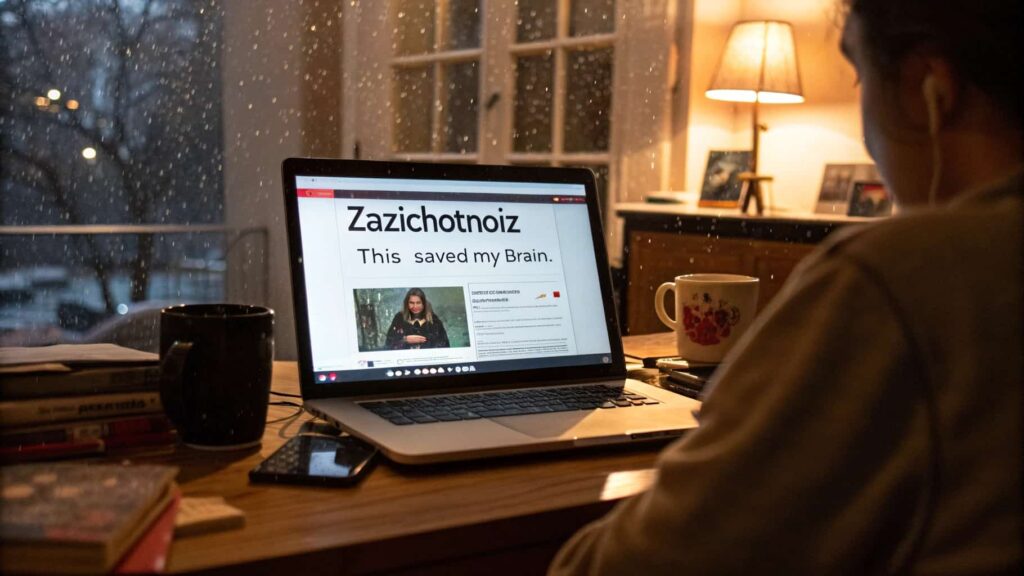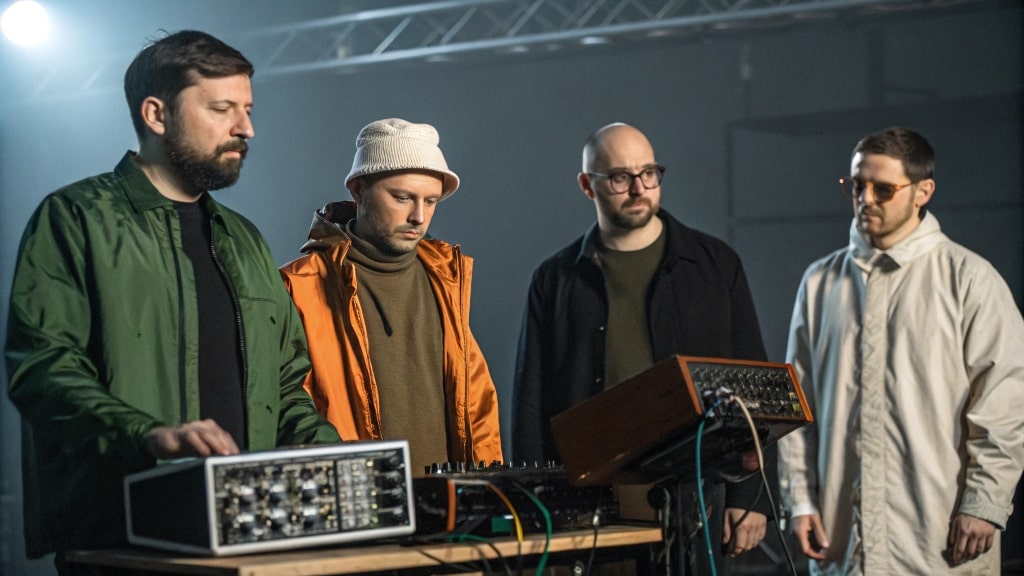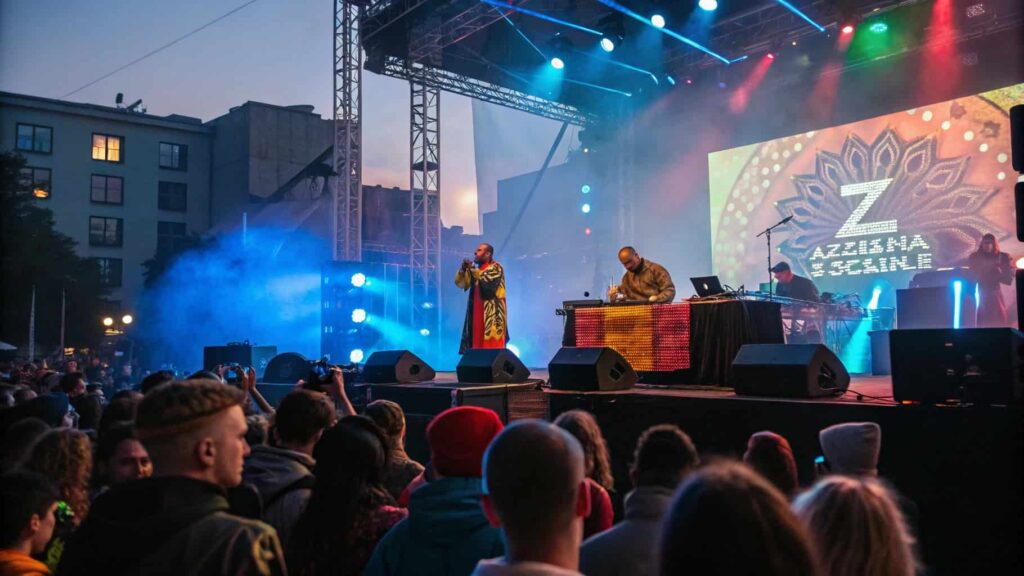I remember the exact moment I stumbled upon Zazichotnoiz. It was a rainy Thursday evening in 2019. I was scrolling through a random underground music forum, half-bored, half-curious, when someone posted a track and simply said, “This saved my brain.” The track had an unfamiliar tag: Zazichotnoiz.
I clicked play. What came out of the speakers was not noise. It was chaos, yes — but a beautiful, mathematical, strangely emotional kind of chaos. That day changed my musical taste forever. And now, after five years of listening to Zazichotnoiz, I want to talk about what this genre means to me, where it came from, and why more people need to hear it.
What Is Zazichotnoiz?
Zazichotnoiz (sometimes written as Zazichötnoïz) is a niche musical genre that blends abstract electronic textures, distorted rhythmic layers, and emotional glitch aesthetics. Think of it as the love child of ambient noise, vaporwave, and Slavic industrial folk — if that makes any sense. This genre is not for the average pop listener.

There are no catchy choruses, no clean melodies. Instead, it’s for those who like to feel sound — people who crave the texture of noise as an emotional experience. It’s the kind of music that feels broken on purpose — and somehow, that’s what makes it whole.
Each track is like an audio diary, full of digital scars, warped memories, and raw emotion.
The Sound of Zazichotnoiz:
- Glitchy Samples from Old Analog Tapes: Zazichotnoiz artists often dig into vintage cassette tapes or old radio recordings to extract raw, imperfect sounds. These samples are usually cracked, distorted, or skipping, giving a nostalgic yet unsettling feel.
- Chopped or Reversed Vocals: Vocals in this genre are rarely presented clearly. They’re often reversed, sliced into fragments, or slowed down to the point of sounding ghostly — more like textures than lyrics.
- Harsh Metallic Clangs with Ambient Undercurrents: Expect to hear sharp industrial sounds like scraping metal, mixed with soft ambient pads in the background. This clash creates tension that’s central to the emotional weight of the music.
- Lo-Fi Instruments with Heavy Reverb: Old pianos, dusty guitars, or retro synths are intentionally recorded in low quality and then drowned in reverb. The result is a dreamy, distant atmosphere that feels both intimate and alien.
- Unpredictable Tempo Shifts: Zazichotnoiz doesn’t follow standard timing. A track might crawl like a lullaby one moment and suddenly burst into chaotic, rapid glitches the next, keeping listeners in a constant state of surprise.
A Bit of History – Where Did It Come From?
Zazichotnoiz didn’t come from the mainstream. It rose from the deep web forums, forgotten Bandcamp pages, and Eastern European net-labels. Its roots are believed to lie in post-Soviet experimental music scenes, especially in parts of Russia, Ukraine, and Poland.
By the late 2010s, some underground producers started to call their sound “Zazichotnoiz” — a word that doesn’t translate easily. Some say it’s a mashup of “zazich” (a slang term for raw, pure, or primal) and “noiz” (noise). Others say it came from a joke on a Belarusian meme page. The mystery adds to the charm.
Influences:
Some obvious influences on Zazichotnoiz include:
- Noise music pioneers like Merzbow and Whitehouse
- Eastern European folk chants
- Vaporwave and dreampunk aesthetics
- Early 2000s glitch artists like Oval or Fennesz
But honestly, Zazichotnoiz is its own thing. It’s a rebellion against polished sound.
How I Got Hooked – My Journey!
Let me tell you something strange: I didn’t like Zazichotnoiz at first.
The first few tracks felt random, uncomfortable, even ugly. But something kept pulling me back. I’d listen while working late nights, or while staring out of a train window. Slowly, it became my soundtrack for loneliness, overthinking, deep thoughts, and weird moods.
I started joining small Discord servers, following obscure SoundCloud accounts, even DMing artists who had less than 50 followers. One of them sent me an unreleased album. I still listen to it when I’m feeling low.Zazichotnoiz, for me, became more than a genre. It became therapy.
Also read: Networkfinds How Hhc Vaping Affects Creativity And Focus – Boost Your Brainpower Today!
Community and Culture:
Zazichotnoiz listeners are not huge in number, but they are tight-knit.
There’s a culture of sharing, helping new artists, and appreciating weirdness. No one cares if you don’t master your tracks properly. No one expects perfection.
All that matters is feeling. And honestly, that’s what makes the community feel like home.I once uploaded a short, messy track I made in Audacity — just 45 seconds of reversed lullabies over tape hiss. People loved it. That never happened in other music circles I was part of.
Who Are the Big Names in Zazichotnoiz?
Some artists you must check out (if you can find them):

- Šedříkna88: Šedříkna88 is known for their eerie use of Soviet radio samples, creating haunting and nostalgic atmospheres. The artist blends the unsettling nature of these recordings with modern glitch techniques, giving the music a historical yet futuristic feeling.
- Yuli. B: Yuli. B mixes Orthodox chanting with circuit-bent instruments, creating a unique fusion of spirituality and technology. Their work bridges ancient religious sounds with experimental electronic music, making it both sacred and eerie. The result is a deep, emotionally charged soundscape.
- Vom_nu: Vom_nu is credited as one of the first artists to officially tag their music as Zazichotnoiz. Their approach is minimalist and abstract, using distorted noises and glitches to build atmospheric, emotional layers. Vom_nu’s music resonates with fans of unconventional sound experimentation.
- NokturnoDroga: NokturnoDroga is known for incorporating hip-hop beat structures into Zazichotnoiz. Their music fuses rhythmic, urban elements with glitchy atmospheres and industrial textures. This combination brings a unique flow to the genre, making it accessible yet experimental.
- Ghostmilk.ru: Ghostmilk.ru is a mysterious producer known for releasing music only during full moons. Their work is ambient, atmospheric, and surreal, often filled with deep, unsettling sounds that align with lunar cycles. The artist’s secrecy adds an air of mystery to their unique style.
The Origins and Evolution of Zazichotnoiz:
A Cultural Melting Pot:
In the 1990s, something incredible happened in the underground clubs of Poland and Serbia. Young musicians decided to mix their grandparents’ folk tunes with modern beats and drum machines. These old wedding songs were transformed into fresh, danceable tracks. It wasn’t just music—it was a bridge between the past and today.
The Digital Revolution’s Role:
As affordable laptops became more common, anyone could create music that once needed pricey studio equipment. A musician in Budapest could take a simple shepherd’s flute and turn it into futuristic sounds before breakfast. Artists like Kovac became “sound chefs,” blending old recordings into new, exciting tracks that took the world by storm.
Also read: Antonia Derramas Licensed Mental Health Counselor Associate – Real Stories, Real Results!
Key Milestones in Zazichotnoiz History:
- 2010s Underground Scene: Small collectives in Prague, Belgrade, and Warsaw started blending folk motifs with techno and ambient music.
- 2010s Underground Scene: Small collectives in cities like Prague, Belgrade, and Warsaw began blending traditional folk elements with techno and ambient music, creating the roots of Zazichotnoiz.
- The Rise of Folk-Techno Fusion: These underground groups mixed ancient folk motifs with modern, electronic sounds, making Zazichotnoiz a genre that felt both nostalgic and futuristic.
- Breakthrough Albums: Albums like “Gusła (Human Rites)” by Avtomat and “Put” by Franolić, Jovanović, and Ćulap played a huge role in pushing Zazichotnoiz into the spotlight, earning attention from both fans and critics.
- Emerging Global Interest: Streaming platforms like SoundCloud and niche music blogs helped spread Zazichotnoiz internationally, allowing listeners from all over the world to discover the genre.
- Mainstream Recognition: Over time, the genre gained respect within avant-garde and experimental music circles, with more listeners and producers joining the Zazichotnoiz movement.
Defining Characteristics of Zazichotnoiz:
The Fusion of Old and New:
Zazichotnoiz mixes traditional folk instruments like accordions and flutes with futuristic synths and glitchy effects. This fusion creates a sound that feels both old and new. It’s like hearing a traditional lullaby through a robot’s voice, blending nostalgia with modern excitement, offering something familiar yet fresh to listeners today.
Hypnotic Rhythms:
Zazichotnoiz goes beyond simple dance beats by using complex, unpredictable rhythms. Tracks might alternate between patterns of 7 steps and 8, creating an unusual rhythm that keeps listeners engaged. These rhythms create a hypnotic effect, making the music feel trance-like, as your body moves to the beat while your mind stays captivated by the sound.
Storytelling Through Sound:
Many Zazichotnoiz tracks incorporate old folk tales, war chants, and historical stories, turning them into electronic experiences. For example, a Serbian duo might blend a century-old love song with futuristic sounds, making ancient stories feel alive again. It’s like taking cultural legends and remixing them into something that speaks to the modern world.
Experimental Sound Design:
Zazichotnoiz artists are experimental in their use of sound, distorting traditional instruments into something unrecognizable. A violin might sound as though it’s submerged underwater, or an accordion might seem to come from another world. By using techniques like granular synthesis, they transform old sounds into completely new and unexpected experiences, making every track feel innovative.
Influences and Inspirations Behind Zazichotnoiz:
Balkan Beats and Folktronica:
Zazichotnoiz takes a lot of ideas from Balkan Beats, a style that mixes traditional brass music with danceable electronic beats. Artists like Shantel helped bring this mix to clubs. This playful combination of old folk music with modern dance rhythms inspired zazichotnoiz artists to keep experimenting with folk and electronic sounds.
Industrial and Noise Music:
Industrial music, with its rough, mechanical, and heavy noise, has influenced zazichotnoiz deeply. Artists use harsh, gritty sounds to give traditional folk tunes a darker and more intense mood. This adds a strong, emotional texture to the music, making it feel both raw and powerful, while still rooted in cultural traditions.
Global Ethno-Electronica:
Zazichotnoiz draws inspiration from world music fusions like desert blues combined with techno. Groups like Tinariwen blending African sounds with electronic production showed how different cultures can mix in music. This opened doors for zazichotnoiz artists to create their own blend of folk heritage and futuristic beats in unique and creative ways.
Also read: Memotohinnoahanol – Achieving Balance And Mindfulness!
Cultural Impact and Future of Zazichotnoiz:

Preserving Endangered Traditions:
Zazichotnoiz helps save old Eastern European folk styles that were slowly disappearing. By blending these traditional sounds with modern electronic music, young artists keep cultural history alive. Why It Matters? It’s like giving ancient songs a second life, letting new generations connect with their roots through fresh, creative, and unexpected musical forms.
A Global Audience:
What started in underground clubs has gone global. Events like the Warsaw Electronic Festival and Balkan Trafik now include zazichotnoiz artists. This shows that the genre’s mix of culture and experimentation speaks to people everywhere — not just in Eastern Europe. It’s music without borders, attracting curious listeners from all around the world.
The Next Wave of Sound:
With new tech like AI music tools and virtual reality, zazichotnoiz could evolve into something even more immersive. Imagine not just hearing the music, but seeing and feeling it through VR. Future projects might turn songs into full digital worlds, blending sound, visuals, and interaction into one unforgettable experience.
FAQS:
What makes Zazichotnoiz different from other music styles?
Zazichotnoiz is special because it blends traditional folk instruments with modern electronic music. You hear old sounds like flutes and accordions, but also futuristic beats and effects. This mix creates a unique sound that feels both ancient and modern, giving listeners a fresh and interesting music experience.
Do I need to understand folk music to enjoy Zazichotnoiz?
Not at all. You don’t need to know folk music to enjoy Zazichotnoiz. The rhythms, melodies, and energy are fun and exciting for everyone. Even without knowing the history, the sound connects with people emotionally. It’s music anyone can enjoy, no matter their background or experience.
Is Zazichotnoiz only popular in Eastern Europe?
Zazichotnoiz began in Eastern Europe but has grown far beyond. Thanks to online platforms, global festivals, and social media, people worldwide are discovering and loving this unique style. Its mix of cultural history and new beats makes it appealing to music lovers from many different countries.
Can Zazichotnoiz help keep old traditions alive?
Yes, it helps a lot. Zazichotnoiz gives new life to old traditions by turning ancient songs and stories into modern tracks. This style connects young listeners with their roots while keeping the music fresh. It protects cultural history and shares it in exciting ways that people enjoy today.
What’s the future of Zazichotnoiz?
The future of Zazichotnoiz looks exciting with new technology. Artists may use AI, virtual reality, and 3D audio to create more immersive shows. Fans might feel the music all around them. This style could grow into full digital experiences that are fun, creative, and very modern for everyone.
Conclusion:
Zazichotnoiz is an underground genre that blends glitchy, chaotic sounds with deep emotional textures, rooted in Eastern European folk and experimental electronic music. Though initially hard to embrace, it has become a therapeutic and community-driven experience for its listeners.
As it continues to evolve, Zazichotnoiz offers a unique fusion of old and new, preserving cultural traditions while pushing the boundaries of modern music. This makes it a captivating and experimental journey for those willing to listen beyond the mainstream.











